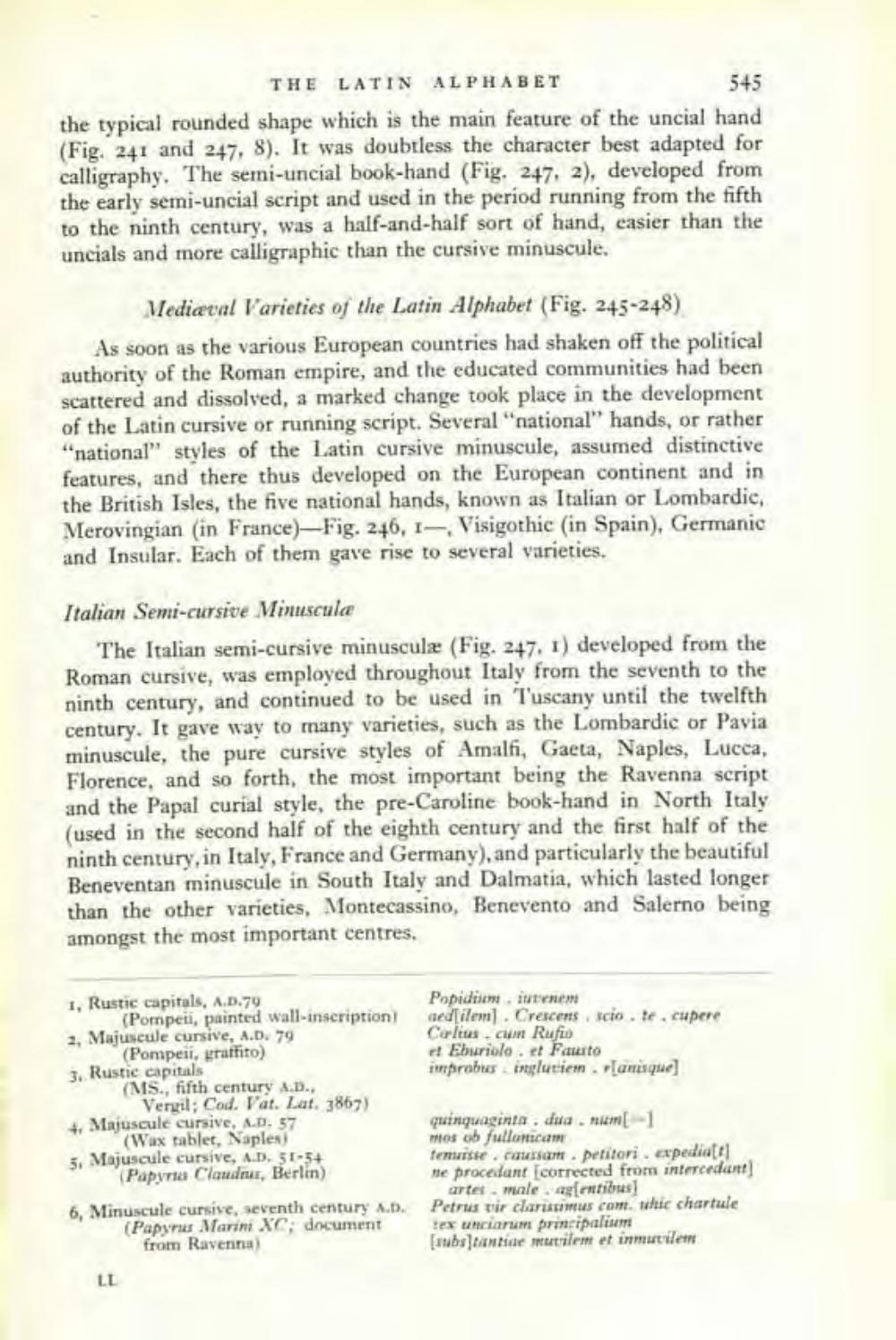________________
THE LATIN ALPHABET
545 the typical rounded shape which is the main feature of the uncial hand (Fig. 241 and 247, 8). It was doubtless the character best adapted for calligraphy, The semi-uncial book-hand (Fig. 247, 2), developed from the early semi-uncial script and used in the period running from the fifth to the ninth century, was a half-and-half sort of hand, easier than the uncials and more calligraphic than the cursive minuscule.
Medieval Varieties of the Latin Alphabet (Fig. 245-248) As soon as the various European countries had shaken off the political authority of the Roman empire, and the educated communities had been scattered and dissolved, a marked change took place in the development of the Latin cursive or running script. Several "national" hands, or rather "national" styles of the Latin cursive minuscule, assumed distinctive features, and there thus developed on the European continent and in the British Isles, the five national hands, known as Italian or Lombardie, Merovingian in France)-Fig. 246, I– Visigothic (in Spain), Germanic and Insular. Each of them gave rise to several varieties,
Italian Semi-cursive Minusculæ
The Italian semi-cursive minusculæ (Fig. 247, 1) developed from the Roman cursive, was employed throughout Italy from the seventh to the ninth century, and continued to be used in Tuscany until the twelfth century. It gave way to many varieties, such as the Lombardic or Pavia minuscule, the pure cursive styles of Amalfi, Gaeta, Naples, Lucca, Florence, and so forth, the most important being the Ravenna script and the Papal curial style, the pre-Caroline book-hand in North Italy (used in the second half of the eighth century and the first half of the ninth century, in Italy, France and Germany), and particularly the beautiful Beneventan minuscule in South Italy and Dalmatia, which lasted longer than the other varieties, Montecassino, Benevento and Salerno being amongst the most important centres,
Popidiem. ut nem sed[ilem). Crescens scio.c. cupere Coltus. cun Rufio
Eburiolo. et Fausto improbus inglutiem. Lamique]
1, Rustic capitals, A.D.79
(Pompeii, painted wall-inscription 2, Majuscule cursive, A.D. 79
(Pompeii, graffito) 3. Rustic capitals
(MS., fifth century A.D.,
Veril; Cod. Vat. Lat. 3867) 4. Majuscule cursive, A.D. 57
(Wax tablet, Naples 5. Majuscule cursive, A.D. 51-54
(Papyra Claudnis, Berlin)
quinquaginta dua. Im[1 mos ob fullumecum femurs coursam. petitori. expediat ne procedant corrected from intercedant
artet male agribas Petrus vir clarissimus com, whic chartule ex unciarum principalium mubstantiae mutilem et inmutilem
6. Minuscule cursive, seventh century A.D.
(Papyrus Marim XC; document
from Ravenna




